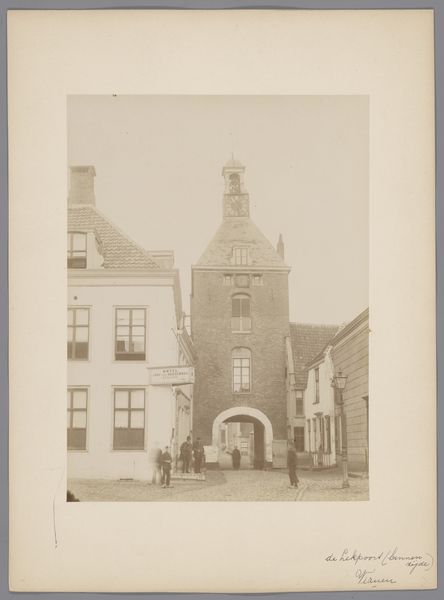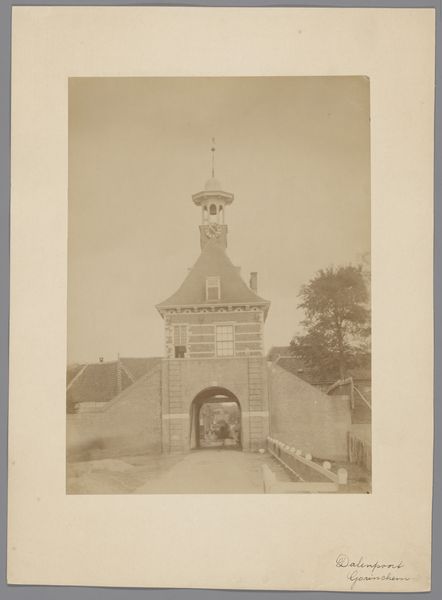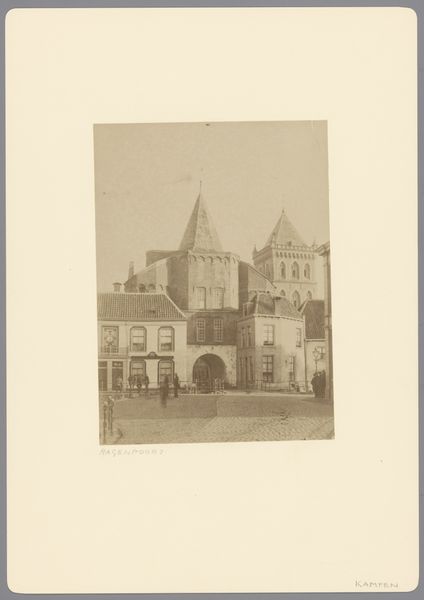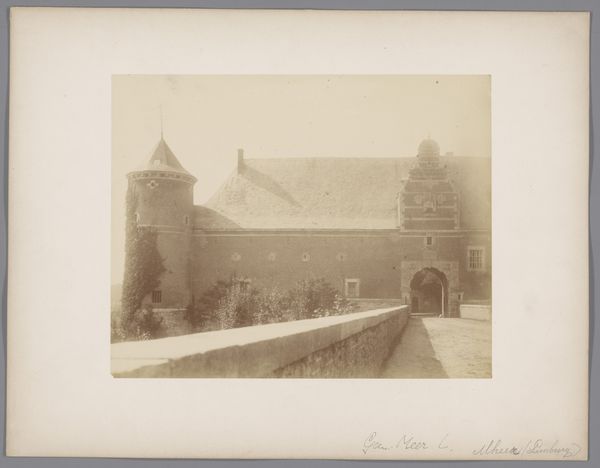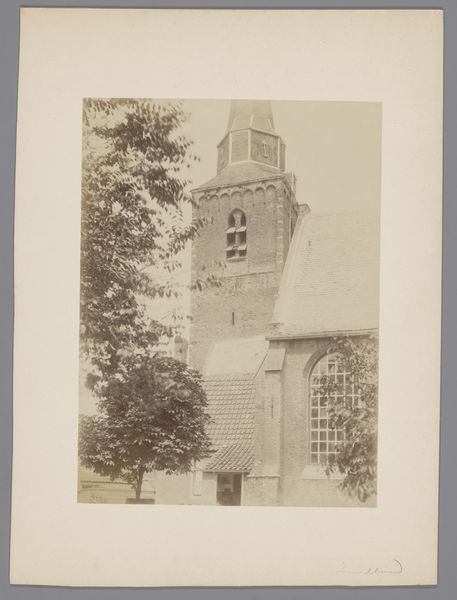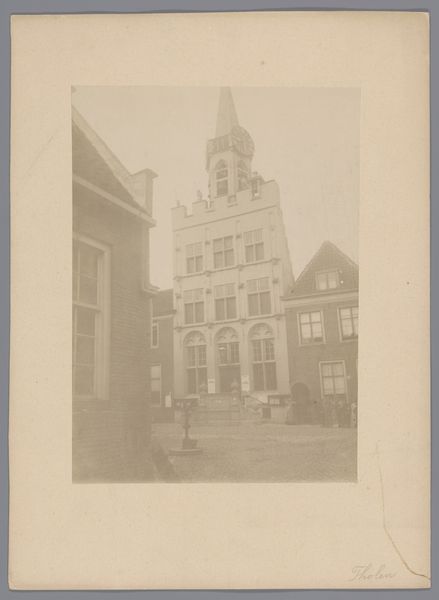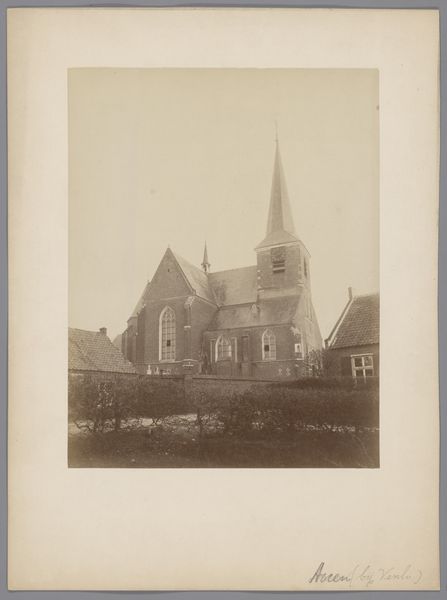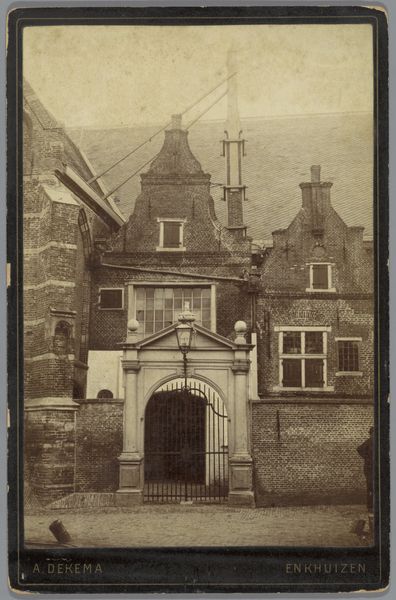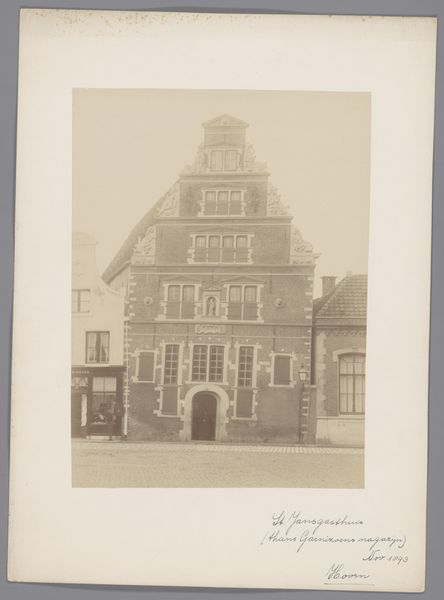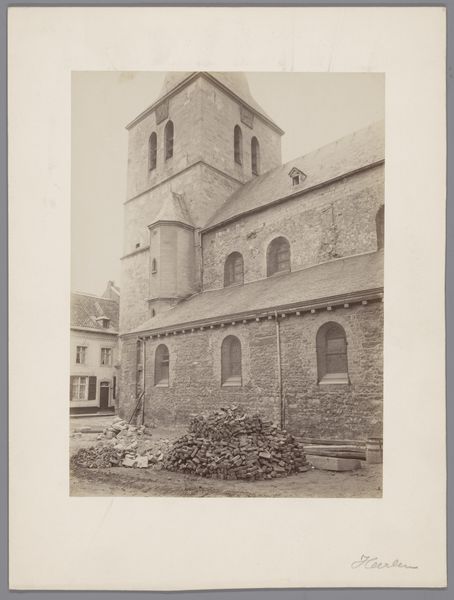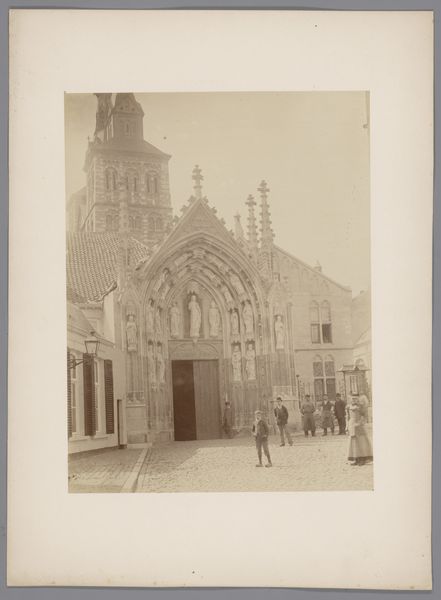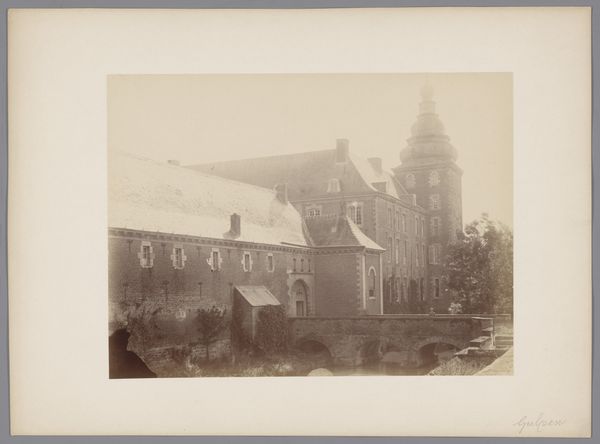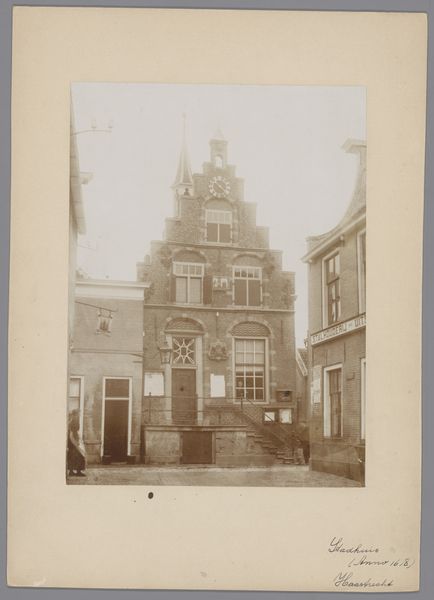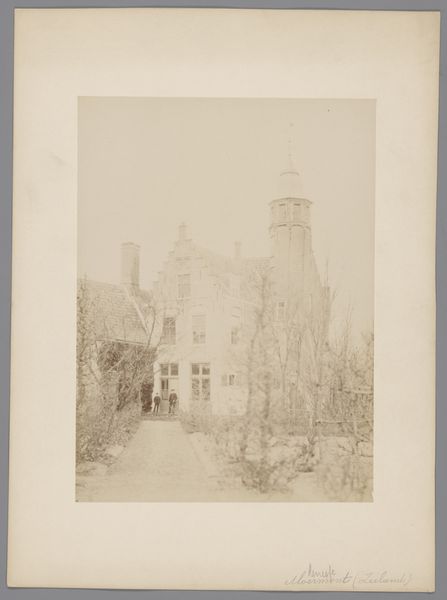
Dimensions: height 231 mm, width 179 mm
Copyright: Rijks Museum: Open Domain
Editor: We’re looking at an image entitled "Buitenzijde van de Waterpoort te Tiel," from 1893. It shows a large stone gate and feels very… staged. I'm curious, what does this photograph communicate about the time it was taken? Curator: That's a good observation about it feeling staged. Photography in 1893, while more accessible than earlier in the century, still carried a certain weight of formality. Considering Monumentenzorg, which means 'monument care', the likely photographer, this image probably wasn't just about capturing the gate. It's about constructing an image of civic pride and historical preservation. Editor: Civic pride, that makes sense. How would this image have functioned in Dutch society at the time? Curator: Think about the late 19th century in the Netherlands. There's a rise in nationalism, a need to define and preserve Dutch identity. Images like these, commissioned or supported by organizations, became visual tools in constructing that identity. They’re less about capturing a slice of life, and more about presenting a carefully curated vision of Dutch heritage. Editor: So, it’s about promoting a particular idea of the past. Were photographs used to argue for specific policies too? Curator: Absolutely. In addition to stirring civic pride, visual records played a pivotal role in decisions around urban planning and building preservation. This image, for example, might be part of an effort to secure funds for the gate’s upkeep, a kind of visual lobbying. How might viewing practices then have contrasted to the experience of viewing it now? Editor: Well, today, seeing it in a museum or online removes it from that original context. We lose the immediacy and the political charge it once held. Curator: Precisely! We’re left to reconstruct its historical purpose. Editor: That's fascinating! I now have a deeper appreciation for how historical photographs served political agendas of their time, instead of merely representing past cultures.
Comments
No comments
Be the first to comment and join the conversation on the ultimate creative platform.
